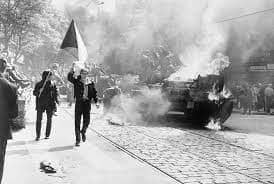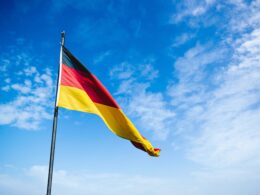Table of contents Show
Political and social unrest marked most of the 20th century in Prague.
The Austro-Hungarian kingdom fell apart after World War One, and Prague became the capital of Czechoslovakia.
Where is Prague? Is Prague in Czechoslovakia?
Prague is no longer part of Czechoslovakia.
In 1993, Czechia and Slovakia subsequently separated to form separate countries.
We can’t discuss the topic without bringing up Czechoslovakia’s 1968 Prague Spring. The Prague Spring was a significant turning point in Czech history.
While still under Soviet authority, Czechoslovakia had more openness to the arts, media, and free expression for around four months during liberal reformist Dubček in 1968.
The brief period between January to August of 1968 is commonly referred to as the Prague Spring. Fearing that Czechoslovakia’s independence might weaken the Soviet Union and the Communist Party’s grip on influence, the Soviet Union dispatched troops from Warsaw Pact nations to restore order.
What, though, sparked the Prague Spring of 1968 in Czechoslovakia?
What Sparked the Prague Spring in Czechoslovakia?
Angry demonstrations in the Czechoslovakia Republic brought down Novotný, elected Dubček, and set things up for the Prague Spring.We have detailed below the factors that led to discontent in the communist regime
Standard of living
Inflation, scarcity of food, and a general decrease in living standards all contributed to a rising tide of discontent in Czechoslovakia throughout the 1960s. The laborers’ housing was substandard, and they could only afford to live the most basic existence.
Czechoslovakia had the most advanced economy in the Eastern Bloc, but its citizens increasingly realized they were giving up their standard of living to support the Soviet Union.
Dissatisfaction with the political system
There was rising discontent among the Czech and Slovak people. Many Czechs thought that their country had become more authoritarian during the past two decades as communist rule expanded. Novotný received criticism because of his restrictions on free speech and the press. Since he took a semi-authoritarian tack (by imprisoning and killing unarmed protesters), he lost support quickly.
Help from the West
Some Czechs and Slovaks believed that the United States would back their protests against the communist administration if they happened. For instance, the United States declared in the Truman Doctrine promised it would
Slowing economy
Historically, the Czechoslovak economy was among the most powerful in the Eastern Bloc. However, this began to fall off in the 1960s, when the Soviet Union began forcing Czechoslovakia to manufacture raw commodities such as steel for the Soviet Union instead of its own.
People also felt that the Communist Party was blocking development. Their directives on what to grow and general oversight of farms stifled any attempts at modernization. Frustration grew as attempts at economic change under Novotný likewise fell flat.
Soviet invasion of Czechoslovakia and its repercussions
Even though there was no direct involvement on the part of Czechoslovakia, the country still faced worldwide criticism after the end of the Prague Spring. Find out how it affected other connections besides just the one between the United States and the Soviet Union below.
The Warsaw Pact
Soviet dominance over the satellite nations in Eastern Europe increased with the invasion of Czechoslovakia in the 1960s. There were no further upheavals in Eastern Europe up until the end of the 1980s because of Czechoslakia’s Prague Spring and the Brezhnev Doctrine, which legitimized military involvement in any nation that disagreed.
Criticism from around the world
The Soviet Union’s actions were roundly criticized on a global scale. Images of unarmed civilians holding bouquets in front of approaching Soviet tanks demonstrated the USSR’s savagery.
Romania and Yugoslavia, for example, distanced themselves politically from the nation of Moscow after the war because of the Brezhnev Doctrine and saw it as an obstruction to peace.
It was the last straw that resulted in the relationship breakdown between China and the Soviet Union because of Beijing’s fears that Moscow would use the ideology as an excuse to invade China.
Implications for Cold War Relations
The Soviet Union made it clear that living together peacefully was out of the question when they introduced the Brezhnev Doctrine. The United States and the Soviet Union continued to build up their respective weapons due to the deteriorating relationship.
Unveiling Prague’s Communist Era: 3.5-Hour Historical and Bunker Tour
Embark on a captivating 3.5-hour walking tour and delve into the intriguing history of communism in Prague. Accompanied by a knowledgeable local guide, explore significant sites linked to the Prague Spring and the Velvet Revolution. Gain unique insights into life behind the Iron Curtain as your guide shares personal experiences of that era.
Highlights
- Immerse yourself in the compelling history of communism in Czechoslovakia
- Visit significant locations connected to the Prague Spring and the Velvet Revolution
- Step into an authentic working-class canteen, immersing yourself in the era’s ambiance
- Experience the atmosphere of a 1950s nuclear shelter
- Enjoy a discounted entry to the Museum of Communism in Prague
Included
- Exclusive access to a captivating nuclear bunker
- Receive an original communist pin as a memento
- Benefit from a discount for entry to the Museum of Communism
- Small group size, ensuring an intimate and personalized experience (up to 8 people)
- Indulge in a break at the authentic canteen, savoring a refreshing Kofola drink
The End of A Peaceful Era
The following events of the Prague Spring gave rise to speculation that the era of peaceful coexistence between the East and West had come to an end.
The real reason why the Soviet Union put an end to Czechoslovakia’s 1968 Prague Spring shortly after it began was because they were afraid of losing their grip on Czechoslovakia, which could lead to similar uprisings elsewhere. There is a lot to learn about the rich history of Prague.
A Defining Moment in the Quest for Freedom
The Prague Spring of 1968 stands as a pivotal chapter in Czechoslovakian history, embodying a brief period of political liberalization and reform that challenged the hegemony of Soviet influence in Eastern Europe. This movement, initiated by Alexander Dubček’s leadership, sought to create “socialism with a human face” by introducing reforms that promised greater freedom of the press, speech, and travel, alongside a reduction in the activities of the secret police. However, the Soviet Union, perceiving these reforms as a threat to its dominion and the unity of the Warsaw Pact, responded with the forceful invasion of Czechoslovakia by Warsaw Pact troops, effectively crushing the Prague Spring movement. This event not only highlighted the limitations of reform within the Soviet sphere but also intensified the Cold War tensions, leaving a lasting impact on Czechoslovak society and the broader international community. The Prague Spring and its suppression serve as a testament to the quest for freedom and the resilience of the Czech and Slovak peoples, marking a significant moment of resistance against oppression.





